Below are a range of responses of several process measurements to a step change in an adjustment of 50% of its maximum range.
If each of the measurements represents an alternative control loop pairing with the adjustment, rank these in order of desirability with a brief explanantion of your choice.
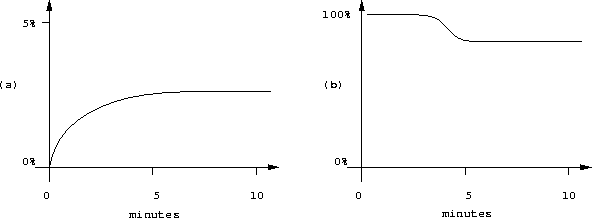
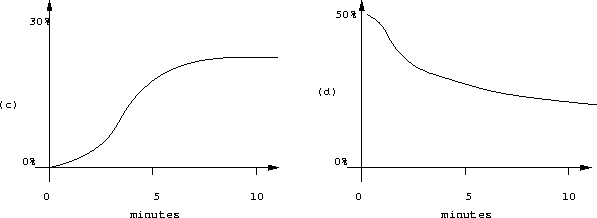
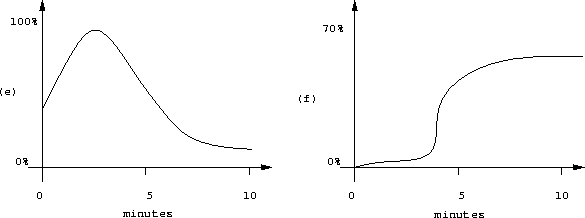
ANSWER
Below is a list of the processes in order of desirability starting with the least desirable:
Response (e)
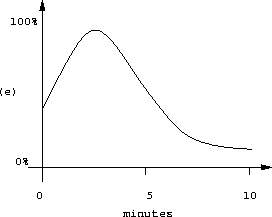
This is the least desirable since it shows an inverse response i.e the measurement variable (controlled variable) increases first before decreasing. This is not good since the process could be upset and also this scenario is very difficult to control.
Response (b)

Next in order of desirability comes response (b). This is difficult to control for two reasons. The first is that there is a large time delay befor the adjustment affects the process. This makes the controller hard to tune and could lead to the process being upset by disturbances before it is controlled back to the setpoint.
The second reason is the scale of the measurement. The range of the adjustment has been 50% however the measurement has only decreased by approximately 15%. Thus the response will not be very sensitive to disturbances.
Response (a)

This response is similar to (b) as regards the scale of the problem. Again the range of the adjustment has been 50% but this time the range of the response is only approximately 2.5%.
Thus the controller is very insensitive to changes and would not work satisfactorily. However note that on the plus side there is no delay time which makes it easier to control.
Response (f)
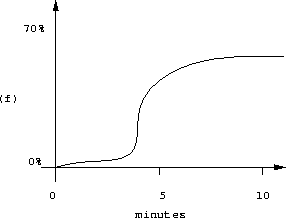
The advantages of this response are that it is a comparable scale i.e a 50% change in the adjustment causes a 60% change in the measurement, and it has a definite steady state at the end.
However on the down side it could be approximated to a pure time delay i.e the response suddenly changes from one steady state to another. Again this makes it hard to control.
Response (d)

We now have nearly perfect response. There is a good scale on the problem and the response can be approximated to a first order response making it easy to obtain controller parameters.
However the only disadvantage is that there doesn’t seem to be a definate steady state at the end.
Response ©
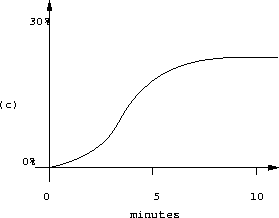
Finally the best response for controlling purposes is response ©. This response has good scaling, an adjustment of 50% causes a change of 30%, can approximate to a first order response and there is a definate steady state.
Note that your order may be slightly different but just as long as you picked up the main points from the exercise. For a process adjustment to be paired with a process measurement things to look for are:
Good Points
- An adjustment of 50% should give roughly the same change in the measurement
- There should be a definate steady state
- Response should approximate to a first-order response
- An instantaneous response is better than a large time delay
Bad Points
- Look for scale to check for insensitivities
- Inverse responses are difficult to control
- Large time delays are difficult to control